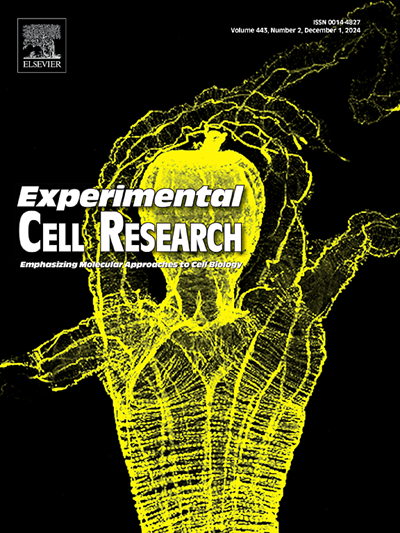Calcium sensing receptor stimulates breast cancer cell migration and invasion via protein kinase C ζ
IF 3.3
3区 生物学
Q3 CELL BIOLOGY
引用次数: 0
Abstract
Calcium-sensing receptor (CaSR), a G protein-coupled receptor, is overexpressed in certain breast cancer tumors where it drives cell migration and secretion of chemotactic agonists, likely contributing to metastatic dissemination. Since CaSR activates breast cancer cell migration via the Gβγ-PI3K-mTORC2/Rac-1 pathway, we hypothesized that PKCζ and perhaps other protein kinase C (PKC) isoforms, known as mTORC2-regulated effectors, are involved in migratory and invasive signaling elicited by CaSR. We analyzed the effect of PKC inhibitors and siRNAs which pointed to PKCζ as effector of CaSR in cell migration and invasion. In breast cancer phosphoproteomic CPTAC datasets, we identified a group of Luminal A subtype cancer patients having active PKCζ, according to its phosphorylation status at the turn motif. In addition, various phosphorylated RacGEFs, including TRIO, ARHGEF26, DOCK1 and DOCK7, clustered as phosphoproteins with active PKCζ. We therefore introduce atypical PKCζ as an effector component of the CaSR-Gβγ-PI3K-mTORC2 pathway in the activation of the promigratory small GTPase Rac. These results support ongoing initiatives to establish critical elements of the CaSR signaling pathway as potential targets in metastatic breast cancer.

钙敏感受体通过蛋白激酶C ζ刺激乳腺癌细胞迁移和侵袭。
钙敏感受体(CaSR)是一种G蛋白偶联受体,在某些乳腺癌肿瘤中过度表达,它驱动细胞迁移和趋化激动剂的分泌,可能有助于转移性传播。由于CaSR通过Gβγ-PI3K-mTORC2/Rac-1途径激活乳腺癌细胞迁移,我们假设PKCζ和其他蛋白激酶C (PKC)亚型,被称为mtorc2调节的效应物,参与了由CaSR引发的迁移和侵袭信号传导。我们分析了PKC抑制剂和sirna的作用,指出PKCζ是CaSR在细胞迁移和侵袭中的效应。在乳腺癌磷酸化蛋白组学的CPTAC数据集中,我们发现了一组Luminal a亚型癌症患者具有活性PKCζ,根据其在turn motif的磷酸化状态。此外,各种磷酸化的RacGEFs,包括TRIO, ARHGEF26, DOCK1和DOCK7,聚集为具有活性PKCζ的磷酸化蛋白。因此,我们引入了非典型PKCζ作为CaSR-Gβγ-PI3K-mTORC2途径激活促迁移小GTPase Rac的效应组分。这些结果支持正在进行的将CaSR信号通路的关键要素作为转移性乳腺癌的潜在靶点的研究。
本文章由计算机程序翻译,如有差异,请以英文原文为准。
求助全文
约1分钟内获得全文
求助全文
来源期刊

Experimental cell research
医学-细胞生物学
CiteScore
7.20
自引率
0.00%
发文量
295
审稿时长
30 days
期刊介绍:
Our scope includes but is not limited to areas such as: Chromosome biology; Chromatin and epigenetics; DNA repair; Gene regulation; Nuclear import-export; RNA processing; Non-coding RNAs; Organelle biology; The cytoskeleton; Intracellular trafficking; Cell-cell and cell-matrix interactions; Cell motility and migration; Cell proliferation; Cellular differentiation; Signal transduction; Programmed cell death.
 求助内容:
求助内容: 应助结果提醒方式:
应助结果提醒方式:


